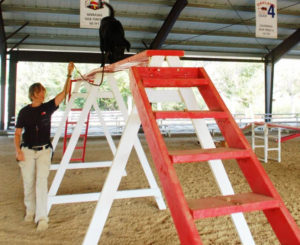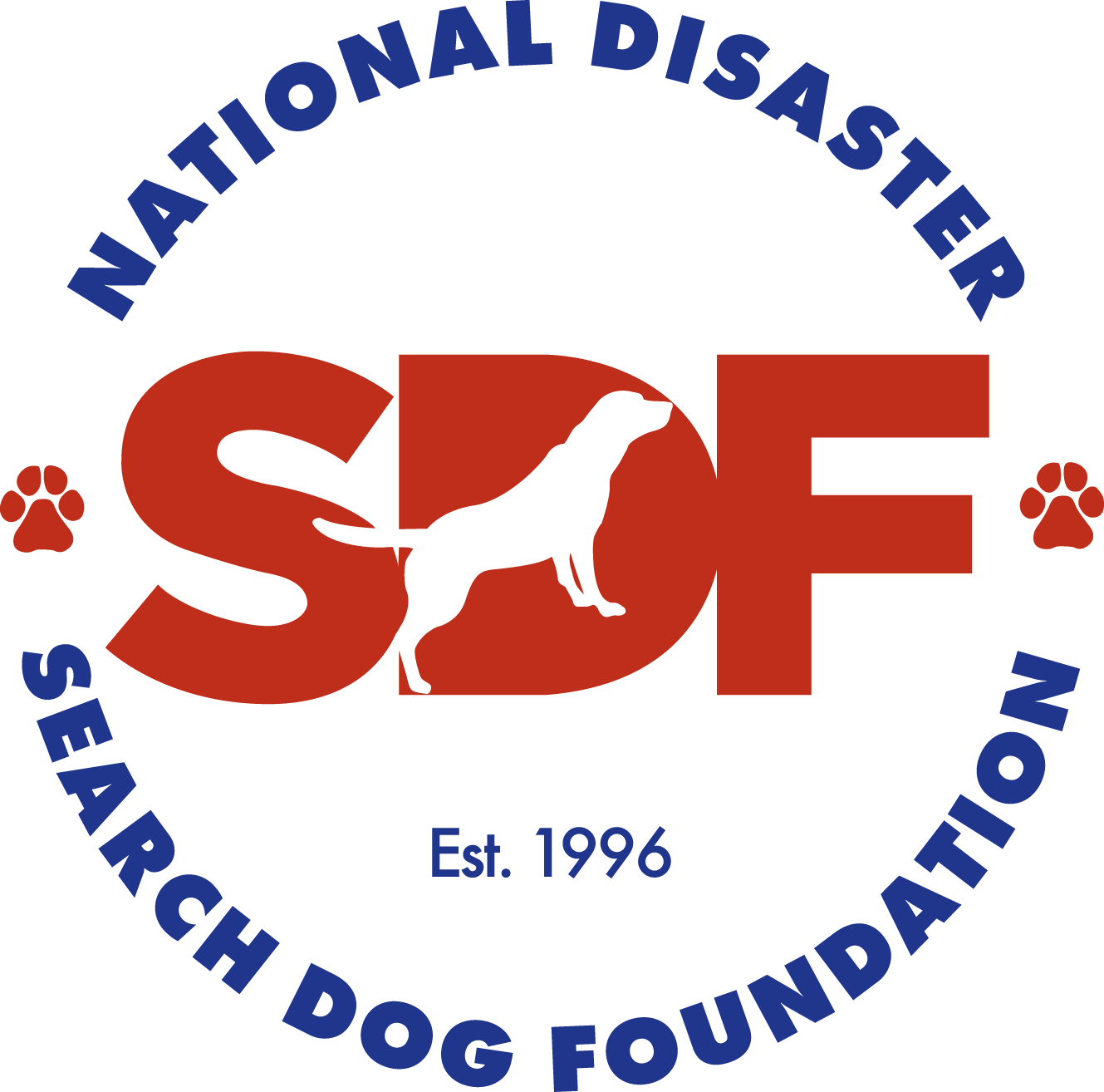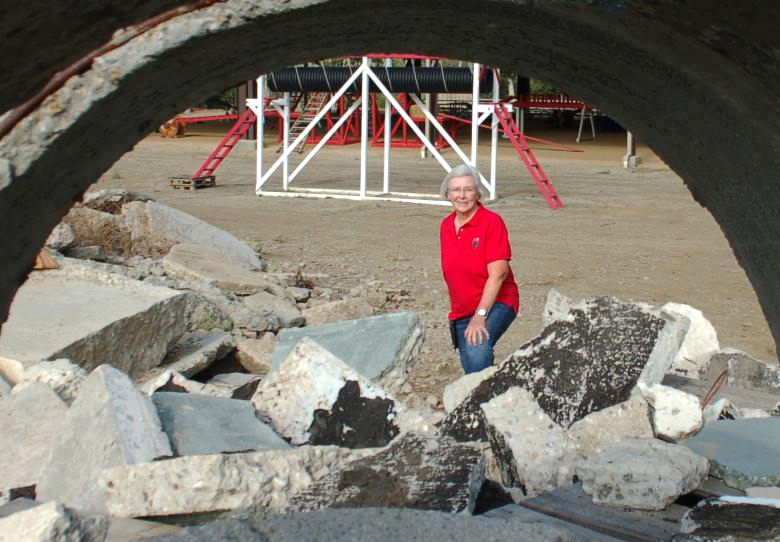August 24, 2015 Scott Steepleton, News-Press City Editor
For 20 years, Wilma Melville has been trying to teach handlers of search dogs new tricks.
The vision of the 81-year-old founder of the National Disaster Search Dog Foundation is close to becoming a reality with the grand opening next year of its National Training Center in Santa Paula.
Located four miles up Wheeler Canyon, beyond grazing lands and horse stables and around more than a few bends in a two-lane road, this 125-acre campus is where rescued dogs become rescuers, and where dog handlers from America’s search teams are educated and stress-tested before being deployed here and abroad to the next earthquake, plane crash, tsunami.
Before being called to search for signs of life amid the rubble of the next terrorist attack.
How do huge slabs of concrete from a freeway project gone wrong, train cars tossed about as if Godzilla had a hand in it, a single-engine plane on its belly and a house that seems to have slid off its foundation, leaving the interior in who-knows-how-bad a shape, help accomplish this?
In a word, realism.
“This is what has been lacking in all of our training to date. We’ve known it, but we haven’t had a way to do it,” retired physical education teacher Ms. Melville told the News-Press during a tour of the facility. Now they do.
By strategically piling those slabs so that “victims” can hide awaiting discovery; by staging that plane as if it’s been in a crash; by pumping human scent into seemingly inaccessible spaces of that cock-eyed house, training center staff seek to give first responders and their canine partners the tools necessary so that no one is left behind.
The facility is laid out in several zones, including Search City, which includes building facades akin to the backlot at Universal Studios, each offering a different search scenario; Disaster Training; and Training Canyons. There’s a faux grass gathering area and a canine memorial where the likenesses, on tiles, of search dogs that have passed are placed on a wall.
 Sonja Heritage, 54, is the foundation’s lead canine trainer, one of three trainers at the center, and on this day, she’s taking a rambunctious black Lab named Vader through an agility course of ladders and chutes and wobbly obstacle props, a ball or well-deserved treat at the ready for a completed task.
Sonja Heritage, 54, is the foundation’s lead canine trainer, one of three trainers at the center, and on this day, she’s taking a rambunctious black Lab named Vader through an agility course of ladders and chutes and wobbly obstacle props, a ball or well-deserved treat at the ready for a completed task.This is not obedience school, she said. “It’s to teach them foot awareness. They know where their front feet are, not where their back feet are. It’s to teach them balance and how to maneuver their weight to control an obstacle, which will transfer to being on a scene and something huge moving and them not panicking and jumping off.”
From agility training, handler and dog may move to the rubble pile, where those freeway slabs, along with wood pallets, plastic pipes of various sizes and storage drums big enough to hold a human provide the closest thing to, say, a collapsed overpass or hotel without actually being there.
“It’s a necessity if you’re training search dogs for disaster work,” said Ms. Heritage. “Rubble is the environment that we work in.”
“We have it set up to go from a little bit easier to tougher as you go further into the pile. We have ‘hides’ that are built within the rubble to put live victims in (who) actually reward the dog when they come find them and bark, which is why they do the work that they do.”
Until it’s moved to a permanent location elsewhere at the training center, the giant rubble pile is being housed on the site of the Wendy P. McCaw Foundation Training Grounds, a search dog “candidate” area, where search dogs start their education. The grounds were made possible by a $1.5 million donation from Mrs. McCaw, co-publisher of the News-Press.
Since its inception, the SDF has trained 163 dogs, the majority of which are rescues, and there are 68 SDF teams around the country ready for deployment around the world.
On average, it costs about $20,000 to train a dog and a handler.
The best search dogs seem to be food- or toy-driven. This might explain Vader’s ability to, on this day, for the first time since he arrived at the center, figure out that to retrieve his favorite toy – a ball on a rope hidden by Ms. Heritage beneath a chain-link gate propped about 10 inches off the ground – he couldn’t go through the fence; rather, he’d have to army-crawl under it.
He did just that, and waiting at the finish was Ms. Heritage, quick with an attaboy and a treat made of lamb and rice.
As the training center marches toward its grand opening Sept. 24, 2016 – SDF’s 20th anniversary – Petco Foundation has come on board with its $2.5 million Pathway to Completion challenge grant, the largest donation in SDF’s history and the latest in $23.5 million in contributions to the center.
The goal is to match the Petco grant dollar-for-dollar, and the deadline is Dec. 31.
In recognition of the contribution, the training center is home to the Petco Foundation Canine Pavilion, which will house 20 indoor-outdoor kennel runs, a play area and a wading pool for the dogs.
Ms. Melville noted the under-construction Petco pavilion will also include a canine kitchen. “You think, ‘Why do you need a kitchen? You just dump in some kibbles and let them eat.’ But out of 16 dogs in the kennel at the current time, we have 12 different diets going on. Each dog is given the diet that suits them best.”
“When they come, they might be scraggly, malnourished, just a mess,” Ms. Melville continued. “But in just a few months, they look just like Vader, sleek and shiny and healthy, and able to do fun and games all day long.”
The pavilion will have a vet center and plenty of classroom space for the handlers. “They do a tremendous amount of learning that isn’t out on the rubble,” said Ms. Melville.
After working rubble of the worst kind – the aftermath of the Oklahoma City bombing in 1995 – with her late dog, Murphy, Ms. Melville, a Federal Emergency Management Agency-trained certified canine search specialist, decided America needed more highly trained teams to respond to disasters.
She created the National Disaster Search Dog Foundation, and with help from renowned dog trainer Pluis Davern , “a new methodology for training search dogs” was born.
Today, Ms. Melville chairs the foundation’s program committee and is involved with the planning of the training center.
Through it all, she’s still searching for a way to bring people around to her way of thinking about the Wheeler Canyon facility.
“This is much more than dog training,” she said. “This center is to train handlers as well as dogs … and I’m having the most difficult time getting that point across.”
“This is handler training and we also train dogs here,” she continued. “No matter what it is, where it is, what continent it’s on, the dog comes out and he does his job the same way.”
“The handler, with all of our human frailties, is the weak link in that team. And it is the handler who needs to be concentrated on. It is the handler, in my opinion, who has to slowly absorb and, finally, learn, and when I see that the handler respects the dog, that’s when I know that he’s made it, he’s there, he gets it.”
And the treat for when he gets it?
“I put my arm around him and say, ‘You’re there, buddy. You’re there.'”


